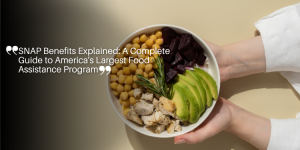Health Secretary Kennedy Announces Landmark Ban on Synthetic Food Colorings
The Announcement 🗣️
Health Secretary Robert F. Kennedy Jr.’s recent declaration has shocked the food industry and pleased food safety advocates.
On Tuesday, he unveiled a ban on eight frequently used artificial food dyes.
The new regulation will gradually phase out two petroleum-based synthetic dyes immediately and six more by the end of 2026.
The groundbreaking announcement aims to respect Americans’ right to know what their food contains while mitigating potential health risks associated with artificial dyes.

The Dyes: Which and When? 🎨⏳
The Food and Drug Administration (FDA) is set to revoke the authorization for Red No. 2 and Orange B within a few months.
These dyes, like the others on the list, are petroleum-based and linked to various health issues.
Following Red No. 2 and Orange B, the remaining six – FD&C Green No. 3, FD&C Red No. 40, FD&C Yellow No. 5, FD&C Yellow No. 6, FD&C Blue No. 1, and FD&C Blue No. 2 – will be off the shelves by the end of 2026.
In a bid to assist food manufacturers, the FDA plans to approve four new natural color additives shortly. 🌿
Emphasis on Transparency 🔍💡
Kennedy’s decision underscores a significant shift towards transparency in the food industry.
He emphasized that the public has the right to be fully aware of what they’re consuming.
This move aligns with previous promises he made alongside Donald Trump during their campaign, where they prioritized addressing artificial food dyes and ultra-processed foods.
Kennedy’s announcement also launched a broader initiative to scrutinize other food additives, particularly those in school meals.
Moving Forward 🚀
While Kennedy’s announcement represents a significant advance, it is clear that this is only one step in a larger mission to improve the nation’s food standards.
This decision primarily targets synthetic food dyes, but more sweeping reforms might be on the horizon.
As public awareness grows, so does the demand for healthier, more transparent food options.
This recent action, undeniably bold, paves the way for further scrutiny and potential reforms in food safety and regulation.
Health Concerns Behind the Decision 🚨🧠
Health Secretary Robert F. Kennedy Jr.’s decision to ban eight synthetic food dyes is rooted in substantial health concerns.
Over the years, experts have drawn connections between these dyes and neurological problems in children.
The impact of artificial dyes has been especially pronounced on young, developing minds.
For example, some studies have shown that these synthetic additives can exacerbate hyperactivity and other behavioral issues in children.
FDA Commissioner Marty Makary’s comments provide a stark context for the ban.
He described American children as “living in a toxic soup of synthetic chemicals,” something that paints a vivid picture of the daily chemical exposure faced by the youngest members of society.
Makary emphasized that while the removal of these dyes isn’t a cure-all, it’s a crucial step towards a healthier future.
The ban is designed to address both immediate safety concerns and long-term health implications.
Artificial dyes, often derived from petroleum, have long been a staple in the food industry due to their ability to enhance the visual appeal of products.
However, this comes at a significant cost to health.
The dyes have been linked to various adverse effects, increasing the urgency to eliminate them from food products. ⚖️
Transitioning away from these harmful additives will undoubtedly involve challenges for food manufacturers.
However, the potential health benefits, especially for children, cannot be understated. By removing these synthetic chemicals, the initiative aims to create a cleaner, safer food environment for future generations.
The health benefits are expected to be wide-ranging, providing a much-needed reprieve from the constant exposure to these harmful additives. 🛡️
Products Affected by the Ban 🍬🍹
The recent directive by Health Secretary Robert F. Kennedy Jr. to ban eight artificial food dyes will shake up the American food industry.
Synthetic dyes, particularly those derived from petroleum, are pervasive in many popular food products.
Household names like M&M’s, Gatorade, Kool-Aid, and Skittles rely heavily on these additives to maintain their signature bright colors.
Commonly Affected Products 🍪🥤
| Product Category | Examples |
|---|---|
| 🍽️ Breakfast Cereals | Many cereals use synthetic dyes to enhance their color appeal. |
| 🍿 Snack Foods | Popular snacks like chips and popcorn often contain artificial coloring. |
| 🍩 Baked Goods | Pastries, cakes, and cookies may contain artificial dyes for color variety. |
| 🍦 Ice Creams | Ice creams often use synthetic dyes to enhance the appearance of flavors. |
| 🍔 Sauces and Dressings | Many sauces, especially condiments like ketchup and salad dressings, contain artificial colorants. |
The Scope of Reformulation 🔄
The ban specifically targets synthetic petroleum-based chemicals, which means companies must find natural alternatives.
This challenge lies ahead for the food industry, with many items in American pantries containing at least one of these now-banned substances.
The transition involves replacing certain colors without compromising the visual appeal that consumers have come to expect. 🍏
Consumer Impact 🛍️🔄
Many everyday items will need reformulation, and this isn’t limited to occasional treats.
Even products that seem healthier, like flavored yogurts or vitamin gummies, might need to reconsider their ingredients list.
Little by little, shoppers may start to notice the ingredients listed on packaging change, as companies eliminate artificial dyes and opt for more natural coloring methods. 🍓
Moving Forward 🚀🍴
As the ban takes effect and companies roll out reformulated products, consumers can expect to see a shift in the aesthetics of their favorite foods.
The move towards natural dyes will reflect broader trends in the food industry towards clean labeling and transparency.
Kennedy’s initiative is more than a single policy change; it’s a sign of a larger evolution in how we approach food safety and consumer rights.
The next steps will delve further into the ways the industry will adapt and what alternatives are on the horizon. 🔮
Timeline and Implementation 🗓️📅
Health Secretary Robert F. Kennedy Jr. has set a clear plan in motion to remove eight synthetic food dyes from American products.
This bold move reflects growing concerns about the health impacts of these artificial additives, especially on children.
To manage the transition smoothly, the plan is divided into two phases.
Immediate Phase-Out ⚡
First, Red No. 2 and Orange B, two petroleum-based dyes, will be phased out within the coming months.
These dyes are among the most concerning due to their high levels of synthetic compounds.
Their immediate removal is a decisive step, aiming to reduce exposure to harmful chemicals in common foods like candies and beverages. 🍬
Gradual Transition ⏳
The remaining six dyes—Blue No. 1 and Blue No. 2, Red No. 40, Yellow No. 5, Yellow No. 6, and Green No. 3—will be gradually removed by the end of 2026.
This extended timeline provides manufacturers ample time to reformulate their products.
It also allows consumers to adjust to changes in the appearance of everyday items.
Support from the FDA 💪
To aid companies during this transition, the FDA plans to authorize four new natural color additives.
These natural options, such as fruit and vegetable extracts, offer safe and sustainable alternatives to synthetic dyes.
Companies like Kellogg’s have already been successful in using such alternatives in other countries, demonstrating the feasibility of this shift.
By setting a clear and practical timeline, Kennedy’s initiative ensures that the transition away from synthetic dyes is both effective and manageable.
This move not only prioritizes public health but also sets the stage for future steps in improving the safety of food additives in the United States. 🛡️🔬
Industry Impact and Alternatives 🏭🍴
Reformulation Challenges 🛠️
The recent decision by Health Secretary Robert F. Kennedy Jr. to ban eight synthetic food dyes is set to create significant changes in the food industry.
Companies now face the task of reformulating their products using natural alternatives.
This may seem daunting, but there are several viable options available.
Natural food dyes, such as carrot juice and watermelon juice, are already in use in various parts of the world, providing a roadmap for U.S. companies to follow. 🍊
Natural Dye Options 🌱🍋
Transitioning to natural dyes involves leveraging the rich array of colors present in fruits and vegetables. These natural options include:
-
Carrot Juice: Known for its vibrant orange hue, carrot juice can replace synthetic orange dyes.
-
Watermelon Juice: This provides a red coloring, suitable to replace synthetic reds.
-
Beet Juice: A popular choice for a natural red or pink color.
-
Spinach and Spirulina Extracts: These can provide green colors, replacing synthetic green dyes.
Existing Global Practices 🌍
Interestingly, many American companies are not new to this practice.
For example, Kellogg’s uses natural dyes like carrot and watermelon juice in Canada for their Froot Loops cereal, whereas in the U.S., they still rely on artificial dyes.
This discrepancy underscores that transitioning to natural colorings is both feasible and already practiced internationally. 🍁
Consumer Perception and Marketing 💬📈
One of the pivotal factors in this transition is consumer perception.
Artificial dyes have been used primarily to make foods appear more appealing, often masking the lack of genuine ingredients like fruits.
As consumers become more health-conscious and aware of ingredient transparency, the shift to natural dyes may actually bolster brand loyalty and trust.
Economic Impact 💰📉
While there may be an initial economic impact due to the cost of reformulation and sourcing natural ingredients, the long-term benefits could outweigh the negatives.
Companies could see a surge in positive consumer sentiment and potential growth in markets that are more stringent on food dye regulations, like the European Union. 📊
Supporting the Transition 🤝🌿
To aid this transition, the FDA plans to authorize four new natural color additives.
This move is intended to expedite the industry’s shift away from synthetic dyes, ensuring a smoother transition process for manufacturers.
This significant industry shift highlights the importance of adopting safer, healthier food production practices.
As companies adapt and innovate, consumers will likely see a noticeable change in the quality and transparency of the foods they consume. 🔄
Global Context and Precedents 🌏📚
International Actions on Food Dyes 🌐
Back in 2009, Britain took a substantial step ahead by phasing out six artificial food colorings.
This move set a remarkable precedent for the importance of regulating food additives to protect public health.
These regulations aimed to reduce exposure to potentially harmful synthetic substances, particularly for children, and have inspired similar actions globally.
European Union Regulations 🇪🇺
The European Union has been at the forefront of regulating artificial food colorings.
Several synthetic dyes are completely banned, while others must have warning labels indicating potential adverse effects.
These policies ensure consumers are well-informed about the potential hazards of ingredients in their food products.
This approach aligns closely with Secretary Kennedy’s emphasis on the right of Americans to know what’s in their food.
Domestic Actions: West Virginia and Beyond 🏠🇺🇸
Recently, West Virginia joined the movement by banning synthetic dyes and preservatives in food.
This state legislation mirrors the broader trend gaining momentum across the United States.
Similar bills have been introduced in other states, signaling a growing consensus about the need for stricter food additive regulations.
This movement demonstrates a domestic acknowledgment of the potential risks associated with synthetic dyes and a willingness to prioritize public health. ⚖️
Transitioning into the Discussion on Industry Impact and Alternatives 🔄🔬
As we move forward, understanding these precedents helps contextualize the FDA’s recent decisions and the broader global movement towards natural food additives.
The industry will need to adapt, relying on advancements in natural color alternatives to meet new regulatory standards and consumer demands for safer food products.
The Debate Around Food Dye Safety 🤔❗
Motivations Behind the Use of Artificial Dyes 💸🎨
The controversy surrounding the safety of artificial food dyes has sparked intense debate among experts, regulators, and the public.
Former FDA official Dr. Peter Lurie argues that the primary purpose of these dyes is financial: food companies use them to make products more visually appealing, thereby driving sales.
Lurie contends that these artificial dyes often serve to mask the absence of natural, more costly ingredients like fruits, essentially creating a superficial allure. 🏷️
Health Risks Associated with Synthetic Dyes ⚠️🧠
Questions about the health impacts of synthetic dyes have been a focal point of this debate.
Nutrition expert Marion Nestle points out that these dyes are not without risks.
She notes that while not all children are affected, some experience behavioral problems, and studies have found associations between artificial dyes and diseases like cancer in animal models.
The contention, therefore, is based on both the precautionary principle and the availability of natural alternatives.
The Push for Transparency and Consumer Safety 🔍💪
The need for greater transparency and prioritization of consumer health has been central to recent regulatory changes.
Kennedy’s directive aims to remove these dyes from the food supply, aligning with broader trends toward cleaner, more transparent food labeling.
The move to ban these dyes reflects growing concerns over long-term exposure to synthetic chemicals, especially for children.
Transition to Natural Alternatives 🍏🌿
As companies adjust to the impending bans, many are pivoting to natural food colorings derived from fruits and vegetables.
This shift is facilitated by the FDA’s approval of four new natural color additives.
Examples like Kellogg’s use of carrot and watermelon juice in Canada show that such transitions are viable and already in practice in other markets.
Health Secretary Robert F. Kennedy Jr.’s initiative is part of a broader agenda aimed at scrutinizing food additives comprehensively.
The implications of this ban will extend beyond artificial dyes, potentially leading to future reforms in the regulation of food ingredients in the U.S. 🔄
Looking Forward: Kennedy’s Broader Food Agenda 📅🍴
Tackling Other Food Additives 🍳
Health Secretary Robert F. Kennedy Jr. has set his sights beyond artificial food dyes, pledging to also address additional food additives, particularly those found in school meals.
This move aligns with his broader aim to ensure that American food is safe and transparent in its contents.
By focusing on the additives in foods consumed in school cafeterias, Kennedy aims to create healthier environments for children, who are most vulnerable to the harmful effects of synthetic chemicals. 🏫
A Step, Not a Solution ⚖️🚶♂️
While the ban on synthetic dyes marks significant progress, Kennedy acknowledges that it is merely one step in a larger battle against harmful food ingredients.
“For the last 50 years, American children have been increasingly living in a toxic soup of synthetic chemicals,” noted FDA Commissioner Marty Makary, emphasizing the need for continued action.
Removing these dyes addresses some immediate health concerns but doesn’t eliminate all the ultra-processed chemicals children would be exposed to.
This broader initiative requires continuous efforts to target and eliminate various food additives that pose health risks. ⚠️
Fulfilling Campaign Promises ✅
Kennedy’s action fulfills campaign promises made in conjunction with former President Donald Trump.
They committed to tackling artificial dyes and ultra-processed foods, intending to enhance transparency and improve public health.
This initiative is a significant step towards fulfilling those commitments, highlighting the administration’s dedication to consumer safety and food quality.
With these bold steps, Kennedy is setting a precedent for future reforms in the American food industry.
This proactive approach provides a template for tackling other harmful additives and fosters a safer, healthier environment for the nation’s children. 🌱👨👩👧👦







